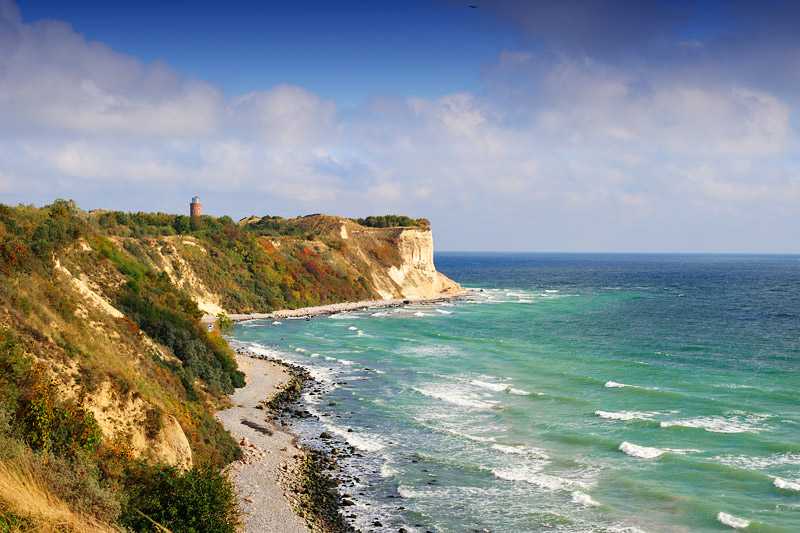Chalk Cliffs on Rügen
About Chalk Cliffs on Rügen
Rügen Island is Germany’s largest island, and Rügen‘s chalk cliffs are the largest of their kind in the country, stretching steeply up to a height of 161 m...
About Chalk Cliffs on Rügen
Rügen Island is Germany’s largest island, and Rügen‘s chalk cliffs are the largest of their kind in the country, stretching steeply up to a height of 161 m (528.2 ft) above the Baltic Sea. They fall within Jasmund National Park and are the subject of many paintings, including the famous “Chalk Cliffs on Rugen” by Romantic artist Caspar David Friedrich....
Attractions near Chalk Cliffs on Rügen
Activities
About Chalk Cliffs on Rügen
About Chalk Cliffs on Rügen
Rügen Island is Germany’s largest island, and Rügen‘s chalk cliffs are the largest of their kind in the country, stretching steeply up to a height of 161 m (528.2 ft) above the Baltic Sea. They fall within Jasmund National Park and are the subject of many paintings, including the famous “Chalk Cliffs on Rugen” by Romantic artist Caspar David Friedrich. Rügen was once part of a large chalk plateau, but erosion and faulting of the relatively soft stone has carved away much of the land, leaving its distinctive cliffs.
Flora and Fauna
The national park, a protected area, also encompasses the ancient beech woods which top the cliff and have been designated a UNESCO World Heritage listed forest. Orchids, Wild Service Tree, Black Alder, Taxus and Malus sylvestris grow in the region too. White-tailed Eagle, Kingfisher, House Martin and the Peregrine Falcon all breed here.
Activities
One of the best ways to view the cliffs is from the sea: a boat tour can be taken around the peninsula. The beaches of the island are popular with water sports fans, with surfing, kitesurfing, and sailing all being popular. Several of the beaches are designated for nudists.
